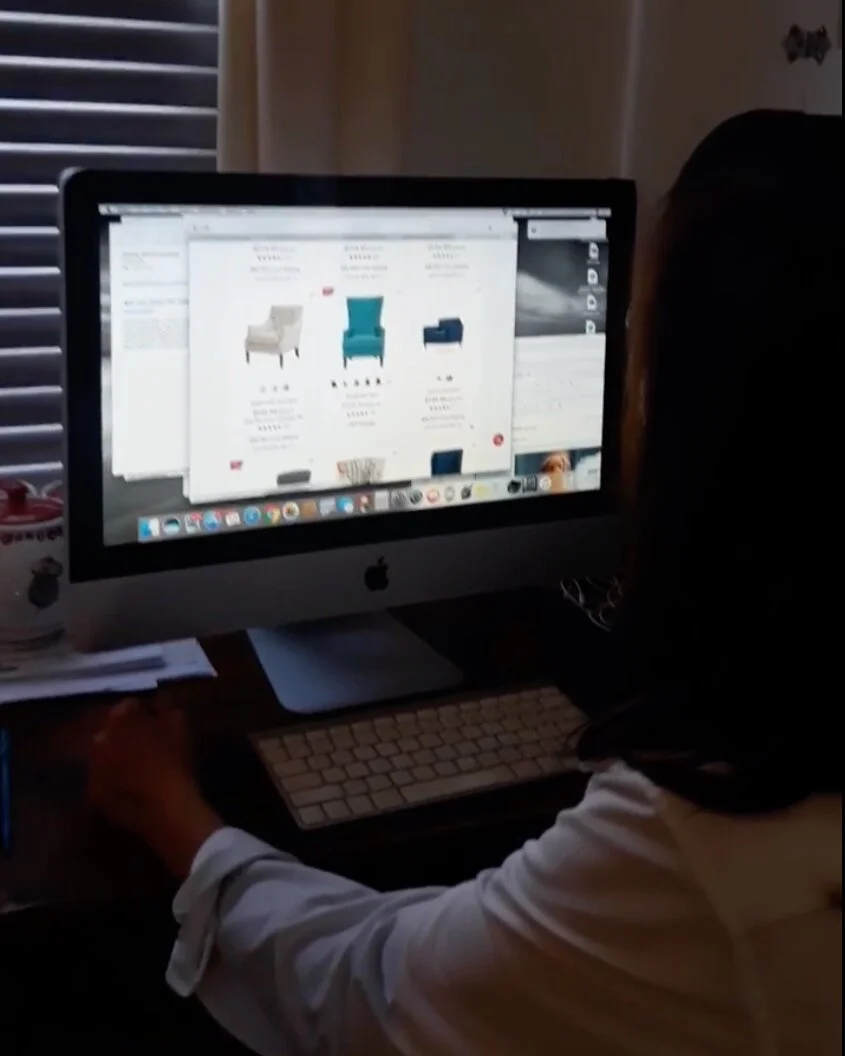WAYFAIR - FIELD STUDIES
USER INTERVIEWS, OBSERVATIONAL STUDIES, AND DATA ANALYSIS
The Challenge
Understand what factors influence the behavior of online shoppers and identify areas where online and in-store shopping can converge.
The Process
Methodology
A 4-member UX research team collaborated with Wayfair to design and conduct 14 field studies
We conducted observational studies and interviewed shoppers from Utah, Georgia, Connecticut, Massachusetts, and Upstate New York.
Our team followed a 4-step process: Documentation, Field Study, Data Analysis, and Results
Research Questions
The purpose of this study was to find answers to three research questions:
1. How do shoppers use technology to increase confidence when making purchases online and in-stores?
2. How do shoppers decide what will look good in their homes?
3. What do shoppers feel they need to buy in stores rather than online?
My Role
As a single point-of-contact between Wayfair and my team, I regularly interacted with the stakeholders.
To understand what had already been explored before, I conducted an in-depth literature review.
Collaborated and designed a research proposal, participant recruiting screener, consent form, observation guide, and interview questionnaire.
As a UX researcher, I conducted observational studies and interviews at participants’ homes and also accompanied them at physical stores like Kohl’s and At Home.
I also shared videos and photographs of the field studies. These gave us with a well-rounded perspective to compare in-store and online shopping behaviors.
Observing an in-store shopper at Kohl’s as she compares prices online on her phone
Observing an in-store shopper at At Home shopping for furniture
Observing an online shopper browsing the Joss&Main website
The Study
Of the 14 participants, 8 were observed as they shopped online while 6 were observed and interviewed in-store.
Each study lasted an hour and was split into 3 sessions: 1) 5-10 minutes introduction, 2) 35-40 minutes observation, and 3) 10-15 minutes interview.
Characteristics of In-Store Participants
Characteristics of Online Participants
Data Analysis
Our team used Otter and Zoom to capture what the participants said, video-recorded the sessions, and also wrote down detailed notes in our observation guides.
The qualitative data was then coded into insights across the shopping experience and mapped back to our research questions.
We created a virtual whiteboard on Mural and used Affinity Mapping to analyze and meaningfully categorize online and in-store data points.
The categories for data analysis included pre-shopping behaviors, decision making, shopping behaviors, price consciousness, payment methods, etc.
A snapshot of the Affinity Mapping
Results
Categorizing the data points and affinity mapping helped us focus on insights, present clear and actionable results, and find answers to the 3 research questions.
We also created a 62-page research report that included an executive summary, research questions, literature review, methodology, and suggestions for further studies.
We summarized our findings and successfully managed to present them to all the stakeholders at Wayfair.
1. How do shoppers use technology to increase confidence when making purchases online and in-stores?
2. How do shoppers decide what will look good in their homes?
3. What do shoppers feel they need to buy in stores rather than online?
“Thank you so much for all of your hard work! You guys truly crushed it. We already heard people percolating and talking about your findings and how we will want to dig deeper into your insights.”










